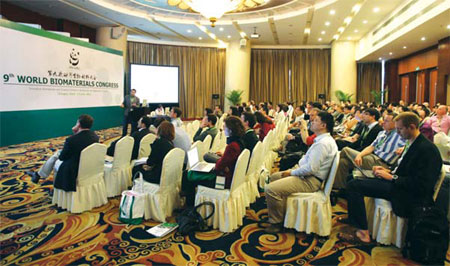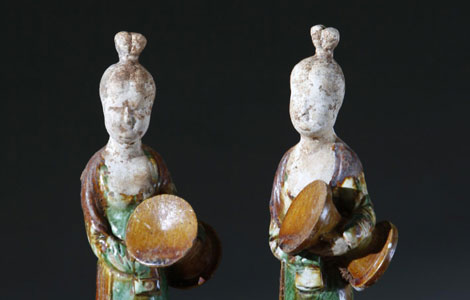Biomaterials: Future is within grasp
Updated: 2012-06-05 08:06
By Wang Xin in Chengdu (China Daily)
|
|||||||||||
|
Scientists from around the globe discussed the future of the industry and human health. |
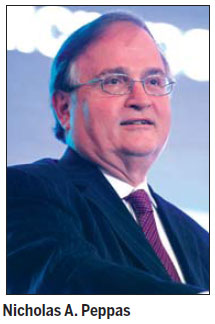
Breakthroughs unveiled at global gathering in Chengdu
The doctor implants a smart biomaterial microchip into a patient for controlled release of medicine that accurately targets and kills cancer while minimizing harm to healthy cells.
It is not a scene from a science fiction movie, but a medical reality that has just entered its clinical phase, said Nicholas A. Peppas, president of the International Union of Societies of Biomaterials Science and Engineering.
The current problem is that the chip is still too big. It could be rejected by a reaction in the body, Peppas told the World Biomaterials Congress held in Chengdu, Sichuan province from June 1 to 5.
He offered two options as solutions - making the chip as small as a fingernail or using biodegradable materials.
He told China Daily that there has been much other "wonderful work" reported at this year's congress, noting a new kind of biomaterial for reconstruction of a damaged face, which includes a mouth, jaw and cheeks.
It could be used for bomb survivors or war casualties.
"The development of biomaterials is endless, like a dream full of unlimited imagination," said Dai Kerong, member of the Chinese Academy of Engineering. "Yet today's dream may come true tomorrow."
Biomaterials are playing an increasingly important role in human health, Dai said.
Using conventional techniques, surgeons implant steel nails and screws to fix broken bones while applying a cast to protect the injury while it heals.
Progress in biomaterials research has lead to creation of more advanced implants made from an active material that biodegrades and is absorbed in bones, making the outside cast unnecessary, said Dai, a renowned Chinese scientist in orthopedics and orthopedic biomechanics.
The material is also sterilizing, which helps promote healing, Dai said.
The technology will enable injured athletes recover faster, reducing the influence of injury on their sports careers, he added.
Using biomimetic materials, artificial bones now also look real and the joints can move freely, Dai said.
Clinical cases show that it is hard to distinguish biomimetic from natural bones in children after they have been implanted for years, even with the aid of X-rays.
The proportion of such procedures is still low, yet they are expected to become a common medical treatment in the future, he said.
Metal and materials scientist Shi Changxu said China will be the world's largest market for biomaterials due to its large, increasingly aging population.
"Some people have to change organs when getting old," said the 90-year-old scientist. "But mine remain the original."
The future research on biomaterials lies in DNA, a US National Academy of Engineering delegate said.
The deeper DNA research becomes, the more useful and compatible with human body the materials will be, the delegate said.
He also predicted that scientists will base biomaterials design on molecular biology in the future, noting the biomaterials will become smaller and smaller.
While researchers now focus on nanotechnology, they will pay more attention to research at the picometer level - or one-thousandth of a nanometer, he said.
The future that scientists envision is based on current biomaterials research into stem cells, gene delivery, tissue engineering and biomedical applications.
Leading experts from around the world gathered at the five-day academic congress presented their latest research results and held heated discussions on the innovative ideas that nurture hope for improved quality of life and heath.
Wiliam Bonfield, a British materials scientist said that the impact from biomaterials stretches beyond the medical community to the happiness of family and society as a whole.
wangxin@chinadaily.com.cn
(China Daily 06/05/2012 page7)
Hot Topics
iphone,shenzhou,taiwan,hiv,school bus,house,hk,tibet,rare earth
Editor's Picks

|
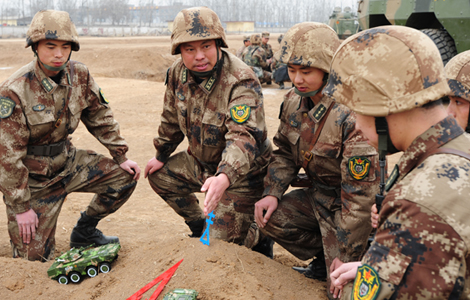
|

|

|
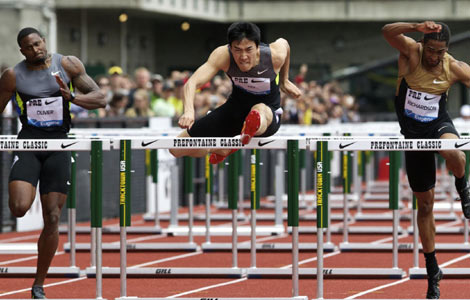
|
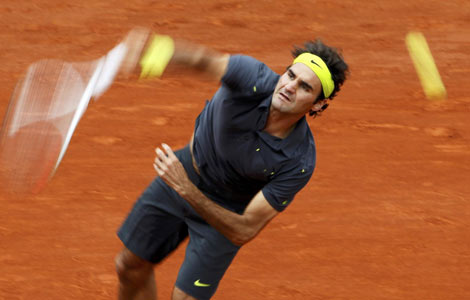
|
